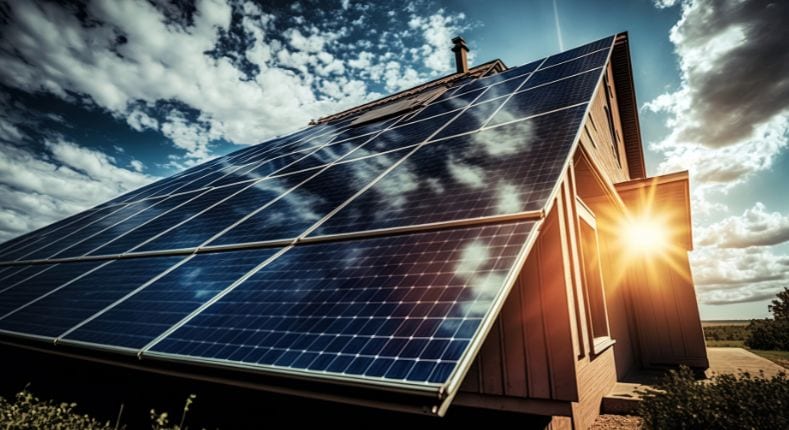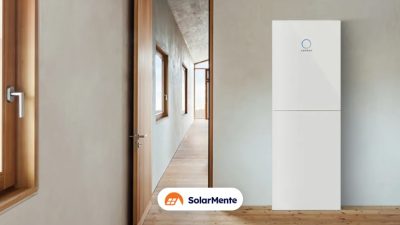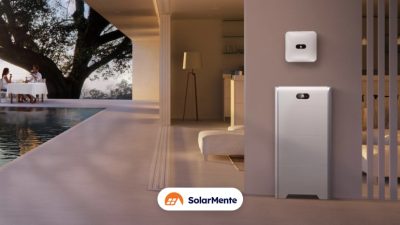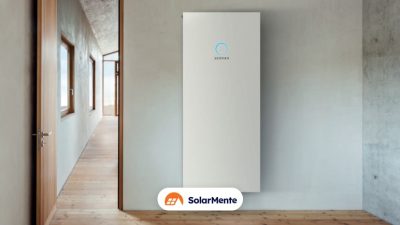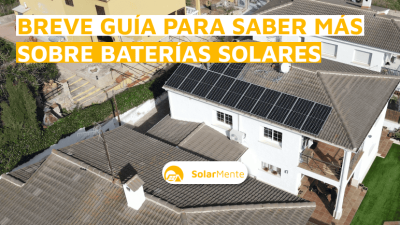In a world where sustainability and energy efficiency have become paramount, solar batteries emerge as an innovative solution to make the most of solar energy. These batteries allow the energy generated by solar panels to be stored during the day, ensuring its availability at times of low solar production, such as at night or on cloudy days.
Throughout this text, we will explore in detail the operation, charging and discharging, advantages and types of solar batteries, providing a comprehensive overview for those looking to invest in solar energy in an efficient and sustainable way.
What is a solar battery?
It is the device that allows you to store the energy produced by the solar panels when the sun is shining so that you can use it when the sun is not shining, such as at night or on cloudy days.
When are the batteries charged?
Batteries are charged in surplus, i.e. when PV production is higher than consumption.
In these cases, the supplier will compensate for the disposal of the surpluses. But by having storage batteries, you maximise the energy from the panels by storing it precisely in the periods in which the surpluses are produced.
Then, when night falls, you make sure that the battery is charged as much as possible to maximise self-consumption, as this is the period of the day when the sun is not shining.
When do batteries discharge?
The batteries are discharged during the night – when there is no more PV production because there is no sun – and also during periods of the day when consumption exceeds PV production.
The batteries are activated immediately when they see that consumption rises and that the photovoltaic production is not enough to supply, so that in no case are we consuming energy from the electricity grid to supply our consumption.
This also occurs at peak periods of the day and in the morning in specific cases.
Battery discharges are important, as they allow you to reach high levels of self-sufficiency.
What is the advantage of installing storage batteries in the PV system?
With battery storage you can reach 99% self-consumption levels in your home, which means that you don’t have to worry about electricity hikes, because you only consume your own sustainable energy!
How much does a battery store?
As the use of one battery or another depends on the photovoltaic installation, we’d better give you an example: If your average electricity consumption is around 100€ per month, in your kit with solar panels and inverter we will install a battery of between 5-10 kWh that will produce between 1,825-3,650 kWh in a full year, i.e. it will cover between 70-80% of your electricity consumption thanks to the daily charge and discharge cycles.
We have taken into account that the average annual consumption of a Spanish household is between 3,000-4,000 kWh.
What types of batteries are available for solar panels?
- Open lead acid. Composed of six separate compartments but connected in series and immersed in sulphuric acid. Their use is ideal for isolated installations thanks to their performance and low cost.
- AGM. Its Absortion Glass Mat technology allows the lead plates of the battery to absorb acid faster and better. They are maintenance-free thanks to their sealed design which makes them easy to transport. Its high number of cycles makes this type of battery the battery of choice for very demanding installations.
- GEL. They stand out for their great durability and for being able to be installed in places with little ventilation. Recommended for medium and small installations.
- Stationary. They are the most recommended for photovoltaic installations thanks to their long useful life and their deep discharge cycles, ideal for any type of consumption. They are batteries that are constantly charged thanks to a regulator that feeds their consumption.
- Lithium. Also recommended for industrial and domestic photovoltaic installations. They charge faster than the previous ones, with higher energy density and longer life.
The main differences between them are based on the materials used to manufacture them as well as the technology that makes them work.
Is it possible to store the accumulated electricity so that I am not connected to the grid?
Yes, it is possible. But the cost of this type of installation is currently very high for two reasons:
The photovoltaic field has to be oversized to ensure that it will always be supplied with energy in winter.
Batteries must be oversized and are expensive.
Therefore, it is always advisable to have the support of a diesel generator.
➡ Finally, we recommend that you do this step not in one go, but in 3 steps:
First we install the panels, see how the client adapts to solar energy, add batteries, assess their performance, and install the system that allows the client to disconnect from the grid.
Should I install batteries with my solar panels?
Adding batteries to your solar installation is a big step if you want to make your solar investment even more sustainable and generate more savings.
The use of different types of storage batteries depends on the solar installation you have, and there are certain factors that make batteries a good investment. Here is an example:
If your average electricity consumption is around 100 euros per month, within your kit with solar panels and inverter we will install a battery of between 5-10 kWh that will produce between 1,825-3,650 kWh in a full year, that is to say, it will cover between 70-80% of your electricity consumption thanks to the daily charge and discharge cycles. For this we have taken into account that the average annual consumption of a Spanish household is between 3,000-4,000 kWh.
How much does it cost to install batteries?
It will all depend on the volume of your solar installation and the consumption that needs to be stored in the battery. Installing a battery inside your solar kit will add a price of between €4,000-5,000 which will ensure you increase your savings from €500 to €800 per year and even more as the price of electricity continues to rise, over the 25 years of your installation’s performance.

